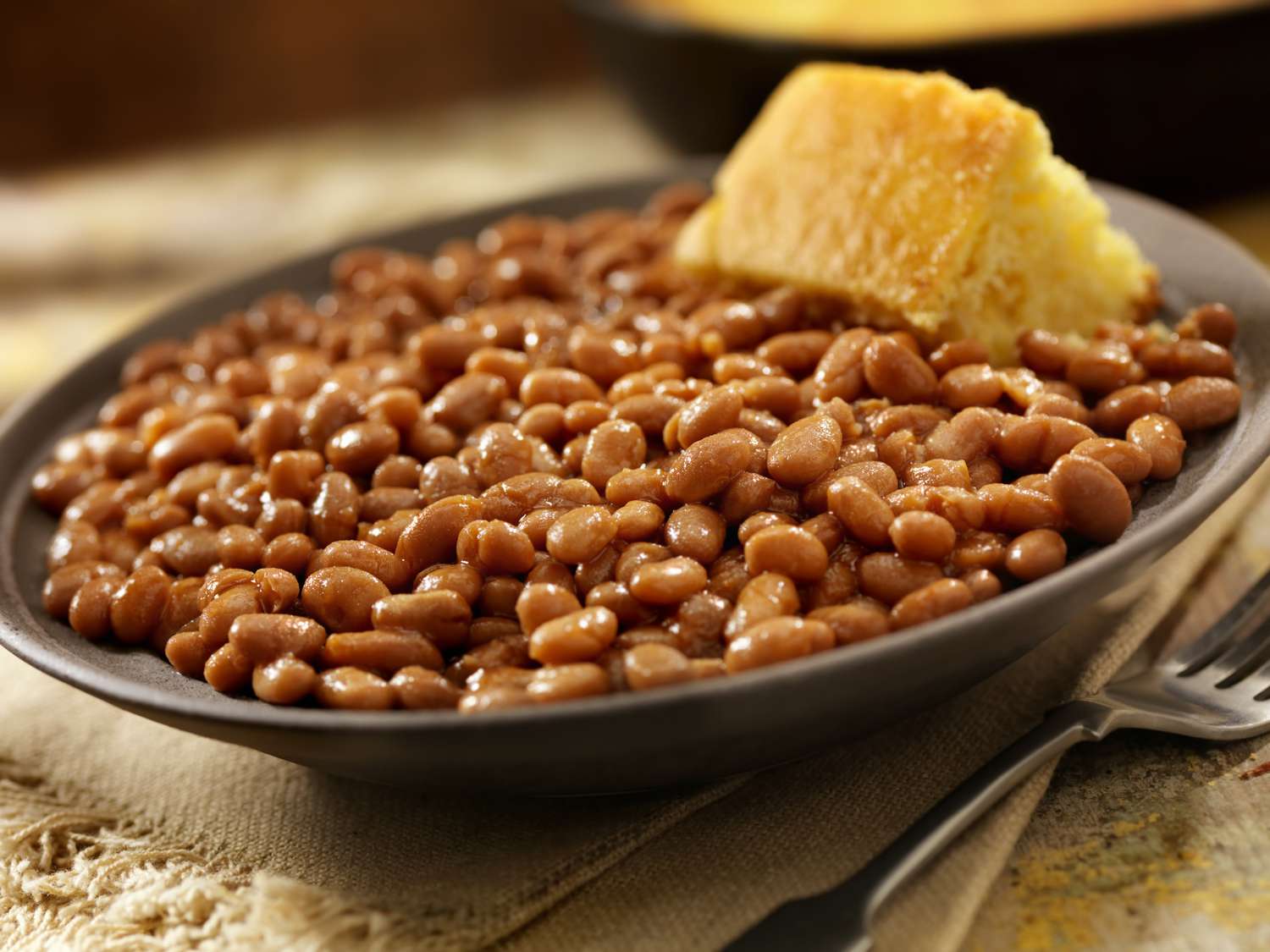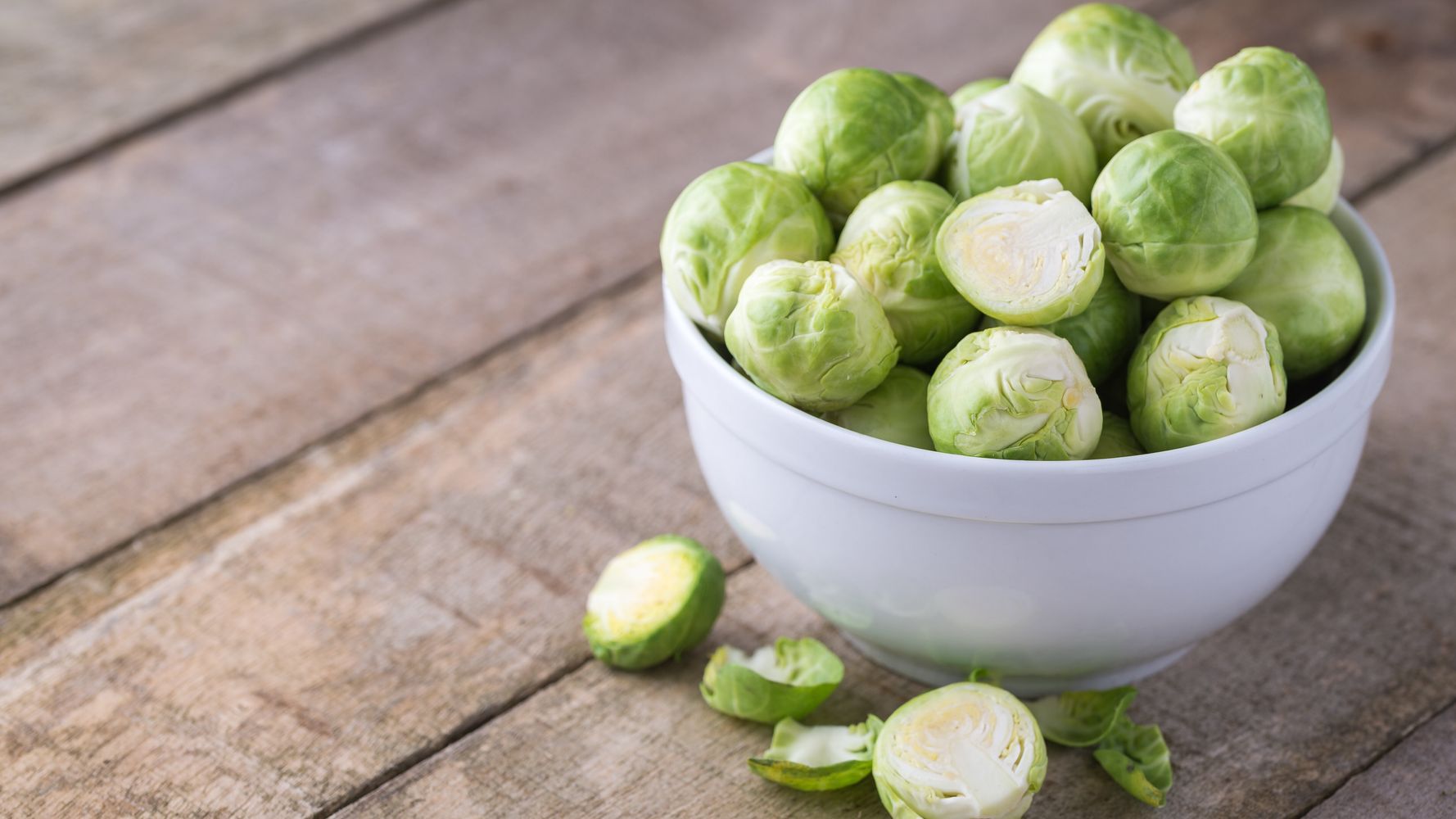

FAQs
What In Beans Makes You Fart
Modified: September 23, 2023
Discover the answer to the age-old question of what in beans causes flatulence. Find solutions and remedies to reduce gas. General questions about the topic answered.
(Many of the links in this article redirect to a specific reviewed product. Your purchase of these products through affiliate links helps to generate commission for Under-tec.com, at no extra cost. Learn more)
Table of Contents
Introduction
Beans are a versatile and nutritious food that is enjoyed by millions of people worldwide. They are a staple in many cultures and are known for their high protein and fiber content. However, there is one unfortunate side effect that many people experience after consuming beans – gas and flatulence. That’s right, beans have a reputation for making you fart!
While the idea of passing gas may be embarrassing or uncomfortable to discuss, it is a natural bodily function that occurs as a result of the digestion process. Everyone experiences flatulence to some degree, and beans have long been associated with causing excessive gas.
So, what exactly is it about beans that make them such potent gas producers? The answer lies in the complex carbohydrates they contain, namely oligosaccharides. These compounds can be difficult for our bodies to break down completely, leading to fermentation in the intestinal tract and the release of gas.
In this article, we will explore the science behind bean digestion and the specific components that contribute to flatulence. We will also provide some tips on how to minimize the occurrence of gas when enjoying beans. So, brace yourself for an informative and, dare we say, entertaining journey into the world of bean-induced flatulence!
The Science of Bean Digestion
Before we delve into the specific factors that make beans a gas-producing food, let’s first understand the process of digestion. When we consume beans, they enter the stomach where they are broken down into smaller components by stomach acid and digestive enzymes.
From the stomach, the partially digested beans move into the small intestine, where most of the nutrient absorption takes place. It is in this part of the digestive system that the trouble begins. Beans contain complex carbohydrates called oligosaccharides, which are made up of short chains of sugars.
Oligosaccharides, such as raffinose and stachyose, are resistant to the enzymes in our digestive system that break down other simpler carbohydrates like glucose and fructose. As a result, these oligosaccharides pass through the small intestine undigested and enter the large intestine.
Once in the large intestine, the undigested oligosaccharides become a feast for the bacteria that reside there. The bacteria ferment the carbohydrates, producing gases such as hydrogen, carbon dioxide, and methane as byproducts. It is the accumulation and release of these gases that cause the bloating and flatulence often associated with bean consumption.
It is important to note that not everyone experiences the same level of gas production from beans. Some individuals may have more gas-forming bacteria in their gut, or their digestive system may handle oligosaccharides more efficiently. Factors like genetics, gut health, and enzyme deficiencies can all influence how a person responds to beans and how much gas they produce.
Now that we have a basic understanding of the science behind bean digestion, let’s explore the specific components that contribute to flatulence in beans.
Oligosaccharides: The Culprits Behind Flatulence
When it comes to gas production from beans, oligosaccharides are the primary culprits. These complex carbohydrates include raffinose and stachyose, which are found in various types of beans, including kidney beans, black beans, and chickpeas.
Oligosaccharides are composed of short chains of sugars that our bodies struggle to break down. Unlike simpler sugars like glucose and fructose, the digestive enzymes in our system are not equipped to fully break down the complex molecular structure of oligosaccharides.
As a result, when we consume beans that contain these oligosaccharides, they travel through the small intestine without being fully digested. Once they reach the large intestine, intestinal bacteria take over and ferment these undigested carbohydrates.
During the fermentation process, the bacteria produce gases such as hydrogen, carbon dioxide, and methane. These gases accumulate in the intestines and are eventually released through flatulence. The more undigested oligosaccharides present in the large intestine, the more gas is produced, leading to excessive flatulence.
It’s worth noting that while oligosaccharides are known for causing gas, they also have some health benefits. They act as prebiotics, which means they serve as food for beneficial bacteria in the gut. These bacteria play a crucial role in maintaining a healthy digestive system and overall gut health.
So, while oligosaccharides can cause discomfort and embarrassment in the form of flatulence, they also contribute to the balance of the gut microbiome, which is important for optimal digestion and immune function.
In the next section, we will explore another component of beans that can contribute to flatulence – alpha-galactosides.
Alpha-Galactosides in Beans and Their Impact on Digestion
In addition to oligosaccharides, beans also contain a group of carbohydrates known as alpha-galactosides. These compounds, including stachyose and verbascose, are widely present in various legumes and contribute to flatulence when consumed.
Similar to oligosaccharides, alpha-galactosides are not easily broken down by the enzymes in our digestive system. As a result, they pass through the small intestine undigested and arrive in the large intestine, where they encounter the resident bacteria.
The bacteria in the large intestine ferment the alpha-galactosides, producing gases like hydrogen, carbon dioxide, and methane. These gases can cause discomfort, bloating, and flatulence in individuals who are sensitive to them.
It’s important to note that the levels of alpha-galactosides vary among different types of beans. For example, soybeans and lentils tend to have higher levels of alpha-galactosides compared to other legumes.
While some individuals have no trouble digesting alpha-galactosides and experience minimal gas production, others may be more sensitive to these compounds and are prone to excessive flatulence after consuming beans.
Now that we understand the role of oligosaccharides and alpha-galactosides in causing flatulence from bean consumption, let’s explore another potential factor – saponins.
Saponins in Beans: Another Factor in Causing Flatulence
In addition to oligosaccharides and alpha-galactosides, saponins are another group of compounds found in beans that can contribute to flatulence. Saponins are a type of plant chemical that act as natural defense mechanisms for the beans.
These compounds are named after their ability to produce a soapy foam when mixed with water, and they have a bitter taste. While saponins offer health benefits such as anti-inflammatory and antioxidant properties, they can also have an impact on digestion.
Studies have suggested that saponins may disrupt the normal functioning of the gastrointestinal lining, potentially leading to increased gas production and gastrointestinal discomfort. However, more research is needed to fully understand the mechanism by which saponins affect digestion and flatulence.
It is worth noting that the levels of saponins vary among different types of beans. Some beans, like chickpeas and lentils, have higher levels of saponins compared to others.
While saponins contribute to the nutritional and medicinal value of beans, they can also be a factor in causing flatulence. Therefore, individuals who are particularly sensitive to saponins may experience increased gas production after consuming beans.
Now that we have explored oligosaccharides, alpha-galactosides, and saponins as potential causes of flatulence, let’s delve into the role of enzyme deficiencies and fermentation in bean digestion.
Enzyme Deficiencies and Fermentation
In some cases, the excessive production of gas from bean digestion can be attributed to enzyme deficiencies in the digestive system. The enzymes responsible for breaking down complex carbohydrates like oligosaccharides and alpha-galactosides are not always present in sufficient quantities in every individual.
For example, the enzyme alpha-galactosidase plays a crucial role in breaking down the alpha-galactosides found in beans. Individuals who have a deficiency in this enzyme may struggle to effectively digest these compounds, leading to increased gas production.
Similarly, deficiencies in other digestive enzymes involved in carbohydrate breakdown, such as lactase or sucrase, can also contribute to digestive issues and flatulence after consuming beans.
Fermentation in the large intestine further exacerbates the issue. As undigested oligosaccharides, alpha-galactosides, and other carbohydrates reach the colon, intestinal bacteria ferment them, releasing gases in the process.
It is important to note that the types and amounts of bacteria present in the gut can differ between individuals. Some individuals may have a higher population of gas-producing bacteria, which can contribute to increased flatulence after bean consumption.
While enzyme deficiencies and bacterial composition play a role in gas production, it is essential to remember that beans are a healthy and nutritious food source. The flatulence-inducing properties of beans should not deter individuals from incorporating them into their diet.
Now that we have explored the factors that contribute to flatulence from bean consumption, let’s discuss some tips for reducing gas and making beans more digestible.
Tips for Reducing Flatulence from Beans
While flatulence from bean consumption is a natural and common occurrence, there are several strategies you can try to reduce gas and make beans more digestible. Here are some helpful tips:
- Soak and Rinse: Before cooking beans, soak them in water for several hours or overnight. This process helps to soften the beans and release some of the gas-causing compounds. Remember to rinse the beans thoroughly after soaking to remove any remaining compounds.
- Gradually Increase Consumption: If you’re not accustomed to eating beans regularly, it’s best to gradually increase your consumption. Start with small portions and gradually increase the serving size over time, giving your body a chance to adapt to the increased fiber content.
- Choose Fermentable Bean Varieties: Some bean varieties, such as black beans and pinto beans, are generally considered to be more easily digestible and produce less gas compared to others. Experiment with different varieties to find ones that are more tolerable for your digestive system.
- Add Herbs and Spices: Incorporating aromatic herbs and spices, such as cumin, fennel, or ginger, into your bean recipes can help improve digestion. These ingredients have traditionally been used for their carminative properties, which can help reduce gas and bloating.
- Use Digestive Enzymes: Taking over-the-counter digestive enzyme supplements, such as alpha-galactosidase, can aid in the breakdown of gas-causing compounds. These enzymes can help improve digestion and reduce flatulence, especially for individuals with enzyme deficiencies.
- Slow Cook the Beans: Slow cooking beans can help break down complex carbohydrates and make them more digestible. Use a crockpot or simmer the beans on low heat for an extended period to soften them and reduce the likelihood of excessive gas production.
- Combine with Digestive-friendly Foods: Pairing beans with easily digestible foods like vegetables, whole grains, and lean proteins can help lessen flatulence. These foods can promote better digestion and provide a balanced meal.
- Chew Thoroughly: Proper chewing is essential for optimal digestion. Take your time when eating beans and chew them thoroughly before swallowing. This can aid in the initial breakdown of carbohydrates and ease the digestive process.
Remember, everyone’s digestive system is unique, and what works for one person may not work for another. It may take some trial and error to find the strategies that work best for you in reducing flatulence from beans.
By implementing these tips and making some adjustments in your bean preparation and consumption, you can enjoy the nutritional benefits of beans while minimizing discomfort and excessive gas.
Conclusion
Beans, while being a nutritious and versatile food, are also known for their potential to cause gas and flatulence. This gas production is primarily attributed to the presence of oligosaccharides, alpha-galactosides, and saponins in beans, which our digestive system struggles to fully break down. When these compounds reach the large intestine, intestinal bacteria ferment them, leading to the release of gases.
Enzyme deficiencies, bacterial composition, and fermentation further contribute to flatulence after consuming beans. However, it is worth noting that these factors vary among individuals, and not everyone experiences the same level of gas production from beans.
Fortunately, there are ways to make beans more digestible and reduce flatulence. Soaking and rinsing the beans, gradually increasing consumption, choosing fermentable bean varieties, incorporating herbs and spices, using digestive enzymes, slow cooking the beans, combining them with digestive-friendly foods, and chewing thoroughly can all aid in reducing gas production.
It is important to remember that beans are a valuable source of protein, fiber, and other essential nutrients. They should not be avoided solely because of their potential to cause flatulence. With the right preparation and mindful consumption, you can enjoy beans and reap their nutritional benefits without excessive gas and discomfort.
Ultimately, finding the best approach for managing gas production from beans may require some experimentation and individual customization. Listening to your body, being mindful of portion sizes, and paying attention to how different preparation methods and varieties of beans affect you can help you strike a balance between enjoying the dietary benefits of beans and minimizing unwanted flatulence.
So, go ahead and embrace the incredible nutritional value of beans while implementing these tips to make your bean-eating experience more enjoyable and gas-free!










